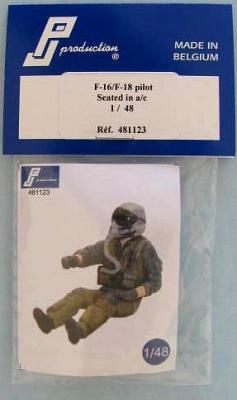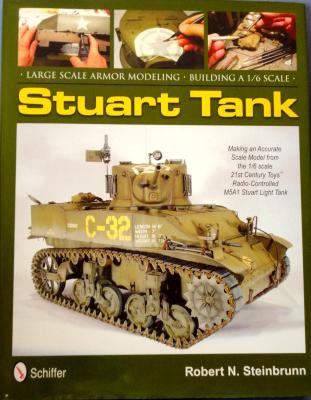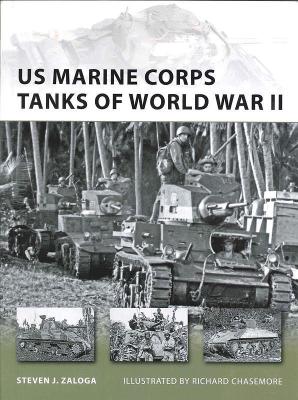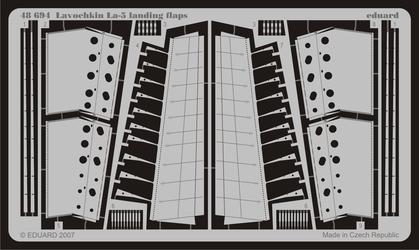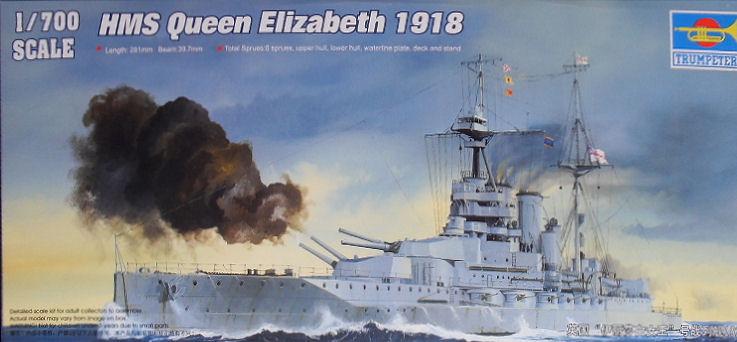I typically start my reviews with a brief history of the item that I am reviewing, but in this instance, the item represented is a pilot for either an F-16 or an F/A-18. What I will tell you is that the latest 1/48 scale figure offering by PJ Production from Belgium is a nicely designed figure wearing an HGU-55 helmet along with a standard flight suit, G-suit, and Nomex gloves. The figure comes with a single left arm and two different right arms, as the controls are different for the Falcon and Hornet (the Falcon has its control stick located on the right console where the Hornet is centered in front of the pilot).
Welcome to the IPMS/USA Reviews site!
Introduction: The primary organization of the IPMS/USA Review website is by IPMS/USA National Contest Class. Within each Class there are sub-menus by kits, decals, books, etc. The Miscellaneous Class is for items that are not class specific or that cross two or more classes.
IPMS/USA Members: We encourage you to submit reviews, both here and to the Journal. To volunteer for membership in the IPMS/USA "Reviewers Corps" and submit your own reviews, please read the Guidelines For Submitting Product Reviews.
Manufacturers, publishers, and other industry members: IPMS/USA is pleased to offer your company the opportunity for product reviews. All product reviews are performed by IPMS/USA members, and are posted in the publicly-accessible section of our website. With very few exceptions, we perform full build reviews of new kit releases, aftermarket products, and supplies. If you would care to provide product samples for review, please contact John Noack, IPMS/USA 1st VP.
To learn more about IPMS/USA, please see our About Us page.
I have always been a fan of Bob Steinbrunn’s model work over the years, seeing his many works in the pages of FineScale Modeler. Accordingly, I jumped at the chance to review this, his latest book, which involves the construction of a 1/6 scale (that’s right, one-SIXTH) M5A1 Stuart Light Tank, using a 21st Century Toys running model as a starting point. As usual, Bob’s model work does not disappoint.
Although you may not be able to find a similar “start kit” of an M5A1, the book is filled with valuable information on not only building large-scale models in general, but also for the M5A1 Stuart itself. Bob’s research is meticulous and his attention to detail is absolutely astounding – the thing that I found most amazing in this work. I personally plan to use this book as a guide when I build my AFV Club 1:35 M5A1. Coincidentally, I just finished a Mirage 1:72 M3 Stuart and I wish that I had had this book as a reference guide at the start of that project.
This latest release in the New Vanguard series by Osprey Publishing helps to fill the void of the history of USMC armor. The 48 page format of the series makes it necessary to limit the amount of information; thusly, there is no coverage of the armored amphibious assault vehicles. This issue only covers land-based armored vehicles. Perhaps we will be blessed in the future with another volume that will concentrate on the LVTs. This issue does, however, give a brief history of the early beginnings of Marine armor, starting with the US copy of the Renault FT, the M1917, as well as the barely adequate Marmon-Herrington tankette. Early US Navy shipping restrictions required lightly armored small tanks that proved to be under powered and under armed. Eventually, the Marines were equipped with the M2 and M3 series of light tanks that saw a baptism of fire on Guadalcanal.
Introduction
While it’s primarily remembered for the massive clash of armor on the ground, the battle of Kursk was also the debut a new Soviet fighter that would eventually help wrest control of the sky from the Luftwaffe’s Fw190 and Me109. That was the Lavochkin La-5/7 series of fighters. An offspring of the earlier LaGG-3 fighter, the La-5 was born when the inline engine of its protégée was replaced by a 14-cylinder M-82 radial engine. In spite of early teething problems that resulted in a redesigned cowling and the reduction of armament to 2 x 20 mm ShVAK cannons, the La-5 proved more than a match for the heavier Fw190A-4/5 series. The La-5FN was equipped with a fuel injected M-82FN radial, further improving its performance. Many Soviet aces, including Ivan Kozhedub (62 kills) and the subject of this built, Capt Pyotr Likholetov (30 kills), added to their scores flying the LA-5/7 series fighters.
Lead ship of the Queen Elizabeth-class of dreadnaught battleships, the HMS Queen Elizabeth was named after Elizabeth I of England, and would see service in and survive both of the World Wars. Launched on 16 October 1913 in Portsmouth, Hampshire, this ship was commissioned in 1915 and was not decommissioned until 1948, when she was scrapped. The ship as built had a displacement of 33,020 tons, a length of 640 feet 10 ½ inches, a beam of 90 feet 6 inches, and a draft of 30 feet 6 inches. Propelled by a total of twenty-four boilers (using oil instead of coal), her four turbines could move the ship at twenty-four knots as a top speed, or for 8600 nautical miles at 12.5 knots, or for 3900 nautical miles at 21 knots. Her main armament consisted of eight fifteen-inch guns, as well as sixteen six-inch guns and two three-inch anti-aircraft guns.











